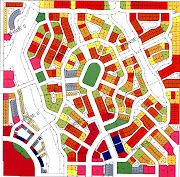To refresh this blog, click here: www.newherbanism.blogspot.com
Buyers Want It All Within Walking Distance. . .
Factoid 1: 75 percent of families do not have any school-age children.
Factoid 2 : Christopher B. Leinberger, a Brookings Institution fellow, says up to 40 percent of Americans want to live in urban places where they can walk to restaurants, shop, jobs, and entertainment.
Source: Builder Magazine, Sharon O’Malley (03/01/2007) as reported in Daily Real Estate News, April 9, 2007
Conclusion: The next hot market will be homes in walkable, dense, mixed used, urban neighborhoods. New urbanism and the new traditional neighborhoods are poised perfectly to fill the coming demand for the real places that FEEL like home. TNDs (traditional neighborhood developments) are being founded all across American and indeed, the world, as more and more people come to crave the feel of an authentic place designed for people and not for cars.
To learn more about the Omaha area's first new traditional, walkable, mixed-use neighborhood, be sure to visit www.whatsnewonstatestreet.com. Register on the contact/info page www.whatsnewonstatestreet.com/info/contact.html to receive periodic updates and progress reports.
Monday, April 09, 2007
Sunday, April 01, 2007
You Can Save 43% by Ditching One Car
To refresh this blog, click here: www.newherbanism.blogspot.com
So, folks, there I was at 32,000 feet flying to the regular semi-annual meeting of The Realty Alliance, reading the April issue of “Spirit,” the Southwest Airlines in-flight magazine. There in a section called “The Numbers” was this tidbit:
“A study commission by the American Public Transportation Association calculates that it costs that it costs a household $14,276 annually to transport two workers to their jobs. If one partner sells a cars and commutes by bus or train or street car or bicycle or walking or working at home in a new urban live/work unit [italics added], the household’s total expenditure for commuting drops to $8,025 – even after transit fares are added in. The lion’s share of the savings comes from the costs of owning, insuring, and fueling a second car. In comparison, the study found that the average U.S. household spent approximately $5,800 on food and $6,900 on mortgage interest in 2004, the data that was used in the January 2007 study.”
Little by little, in many ways and in many places, a new consciousness is taking shape in the country. Can you feel it too? The balance is tipping in favor of more sustainable development and building practices. The time is right for traditional neighborhood development with all the benefits conveyed by the new urbanist principles. Be sure to see the website for the Omaha area’s first new traditional greenfield neighborhood by visiting www.whatsnewonstatestreet.com.
So, folks, there I was at 32,000 feet flying to the regular semi-annual meeting of The Realty Alliance, reading the April issue of “Spirit,” the Southwest Airlines in-flight magazine. There in a section called “The Numbers” was this tidbit:
“A study commission by the American Public Transportation Association calculates that it costs that it costs a household $14,276 annually to transport two workers to their jobs. If one partner sells a cars and commutes by bus or train or street car or bicycle or walking or working at home in a new urban live/work unit [italics added], the household’s total expenditure for commuting drops to $8,025 – even after transit fares are added in. The lion’s share of the savings comes from the costs of owning, insuring, and fueling a second car. In comparison, the study found that the average U.S. household spent approximately $5,800 on food and $6,900 on mortgage interest in 2004, the data that was used in the January 2007 study.”
Little by little, in many ways and in many places, a new consciousness is taking shape in the country. Can you feel it too? The balance is tipping in favor of more sustainable development and building practices. The time is right for traditional neighborhood development with all the benefits conveyed by the new urbanist principles. Be sure to see the website for the Omaha area’s first new traditional greenfield neighborhood by visiting www.whatsnewonstatestreet.com.
Subscribe to:
Comments (Atom)


